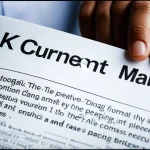Overview of UK Travel Options
Travelling in the UK offers a diverse range of options, catering to both residents and tourists. Public transport forms the backbone of British commuting, providing functional connections between major cities and remote villages. Trains, which include high-speed services like the Eurostar, are favoured for long distances, due to their speed and comfort. Buses fill the gaps, offering extensive coverage, especially in regions not served by rail.
In contrast, driving in the UK provides flexibility but comes with its own challenges, such as navigating through narrow, sometimes congested city streets. The UK drives on the left, which may be an adjustment for international visitors, and cities like London have congestion charges, adding to the cost.
Have you seen this : Top tips for navigating urban roads safely in the uk
Choosing the ideal travel mode depends significantly on the journey planned. For urban centres, public transport often proves more efficient and cost-effective, whereas rural journeys might require a car. It’s equally crucial to weigh factors like travel time, convenience, and personal comfort. By understanding these distinctions, one can make informed decisions about the best travel approach, optimising both cost and time without sacrificing convenience.
Integrating Public Transport with Driving
Finding the optimal way to integrate public transport with driving can greatly enhance travel efficiency in the UK. A key strategy involves utilising park-and-ride schemes, which allow drivers to park in designated areas and continue their journey via buses or trains. This can minimise stress related to peak-hour congestion and parking hassles in city centres.
Additional reading : Essential tips for uk drivers: ready your vehicle for extended travel adventures
Evaluating when to make the switch from driving to public transport involves considering factors such as traffic conditions, time of day, and parking availability. By using technology and apps like Google Maps, one can efficiently decide if it is more practical to drive or to use public transit. Cost is another crucial consideration—public transport can sometimes be cheaper than driving, especially when factoring in fuel and parking fees.
Incorporating these strategies not only provides flexibility but also promotes sustainable travel practices. It’s beneficial to weigh the journey’s demands before setting off, ensuring that the chosen mode suits your needs. By thoughtfully combining these options, travellers can enjoy a smoother, more cost-effective commuting experience across the UK.
Cost-Effective Travel Solutions
Navigating travel costs in the UK can be simplified with budget transport strategies. Cost-effective travel starts with understanding the tickets, passes, and discounts offered for public transport. Rail companies frequently offer advance booking discounts, reducing tickets substantially if booked early. Similarly, bus operators might provide daily or weekly passes, perfect for regular commuters seeking savings.
Enhanced route planning assists in maximising these savings. By planning journeys during off-peak hours, travellers can benefit from lower rates on many services. It’s also essential to use technology; apps like Trainline or National Rail can alert users to discounts or railcard options suitable for regular travel patterns.
For those who drive, savings strategies focus on optimising fuel efficiency and parking expenses. Carpooling apps like BlaBlaCar can reduce costs by sharing journeys with others, while comparing fuel prices at local stations helps cut expenses. Utilizing public transport for part of the journey, particularly in congested areas, also avoids hefty parking fees. Identifying cheap or free parking areas on the outskirts and continuing with a public transport pass can be incredibly efficient. Adopting these tactics ensures a better balance between comfort and affordability.
Detailed Public Transport Options in the UK
Exploring UK public transport provides numerous options for both buses and trains, each with unique benefits.
Buses
Buses are integral to the UK’s transport landscape, offering extensive coverage and frequency across cities and rural areas. Their ticketing options are flexible, featuring single, return, and day passes to suit various needs. For short journeys or areas with no rail services, buses are advantageous due to their accessibility and consistent routes. Noteworthy routes like the London bus network showcase this efficiency, renowned for its iconic red double-deckers.
Trains
The UK’s train services offer a thorough network for longer travels. Various services, from local to express, cater to different journey lengths and locations. Understanding these can aid in selecting suitable services, with train operators like Great Western Railway and Southeastern providing comprehensive schedules. Tips for purchasing train tickets include booking in advance to catch cost-saving deals, which can greatly assist in managing schedules and reducing travel expenses.
Other Transport Services
Beyond buses and trains, options like trams, ferries, and rideshares broaden the scope. Trams service cities such as Manchester, while ferries connect regions otherwise divided by water. Combining taxis and rideshares with public transport allows seamless transitions, and innovative solutions like bike-sharing schemes promote eco-friendly travel within the UK.
Route Planning and Navigation
Planning your journey in the UK efficiently can significantly enhance your travel experience. By utilising route planning and navigation apps, travellers can achieve seamless and stress-free travel. Apps like Google Maps and Citymapper offer real-time traffic updates and transport schedules that aid in adjusting routes dynamically. These apps help indicate the quickest and most cost-effective routes by integrating both road and public transport options, ensuring you save time and reduce travel costs.
Moreover, planning routes in advance allows for smoother transitions between different modes of transport. For example, when starting a journey by car, navigation apps can pinpoint the best park-and-ride locations before continuing on public transport, thus avoiding congested city centres.
To handle unpredictable conditions such as traffic jams or service changes, apps like Waze provide user-generated alerts, helping travellers make informed route adjustments. Regular use of such technology simplifies navigating unfamiliar areas and optimises travel efficiency.
By harnessing these tools, travellers not only enhance their overall travel experience in the UK but also gain a flexible, efficient approach to journey optimisation, allowing for unparalleled convenience and planning precision.
Safety Considerations and Best Practices
When exploring UK travel options, prioritising travel safety and best practices is crucial. Using public transport involves understanding essential safety tips. Always stay alert to your surroundings and keep personal belongings secure. Familiarise yourself with station layouts to identify exits and security personnel.
For those integrating public transport with driving, following best practices for parking is vital. Park in well-lit areas and secure vehicles by locking all doors and windows. Utilising official park-and-ride schemes reduces the risk of vehicle-related incidents, combining convenience with security.
Staying informed during travel enhances both safety and efficiency. Mobile apps like Citymapper or National Rail provide real-time updates, allowing for adjustments based on service changes or unforeseen issues. These platforms can advise on delays or alternate routes, maintaining a smooth commuting experience.
Additionally, be mindful of local guidelines and regulations, especially when driving in potentially challenging conditions such as narrow streets or unfamiliar rural roads. Adopting these safety strategies ensures a more secure and worry-free journey across the UK, allowing you to focus on optimizing your travel experience while embracing the diverse array of transport choices available.
User Experiences and Case Studies
Exploring user experiences can provide valuable insights into combining public transport and driving for efficient travel in the UK. Travel stories from individuals highlight the practicality of these strategies, offering tips that have been tried and tested.
Consider the example of a London commuter who shifted from daily driving to an integrated transport approach. By utilising park-and-ride facilities and public trains, their story reveals notable reductions in stress and travel time. Such case studies underscore the transformative impact on daily commutes when innovative solutions are embraced.
Common travel stories often reflect challenges like unexpected delays or navigation missteps. Users frequently mention relying on navigation apps for real-time updates, which help circumvent traffic congestion and optimise routes. By analysing these user experiences, it becomes clear that adaptability and tech-savvy approaches play crucial roles in overcoming travel hurdles.
Lessons learned from these shared experiences often involve discovering efficient driving strategies and refining one’s approach. Observing how others have successfully managed commuting difficulties encourages more informed decisions. Through this dialogue and understanding of shared travel stories, newcomers can gain confidence, refine their travel methods, and ultimately enhance their UK travel experience.
Conclusion and Resources
Exploring UK travel resources can significantly enhance your planning and setup, ensuring smoother journeys. Knowing where to get assistance is key for a successful travel experience. Various online platforms offer comprehensive guides to different UK travel options, helping both locals and tourists.
-
Official Websites: National Rail and Transport for London provide structured travel information. They offer updates on schedules, ticketing, and network changes—crucial for efficient route planning.
-
Apps for Seamless Travel: Utilising navigation apps like Google Maps and Citymapper can simplify your journey by offering real-time traffic updates and route suggestions. These apps help you integrate public transport options perfectly.
-
Travel Guides: Websites like VisitBritain and Lonely Planet include detailed guides on regional attractions and public transport routes. Exploring these before travel can help optimise your itineraries.
For comprehensive travel plans, combining travel resources can streamline your experience entirely. By accessing updated information through these channels, you ensure you stay informed and adaptable, embracing any arising opportunities for more convenient and cost-effective travels throughout the UK.








